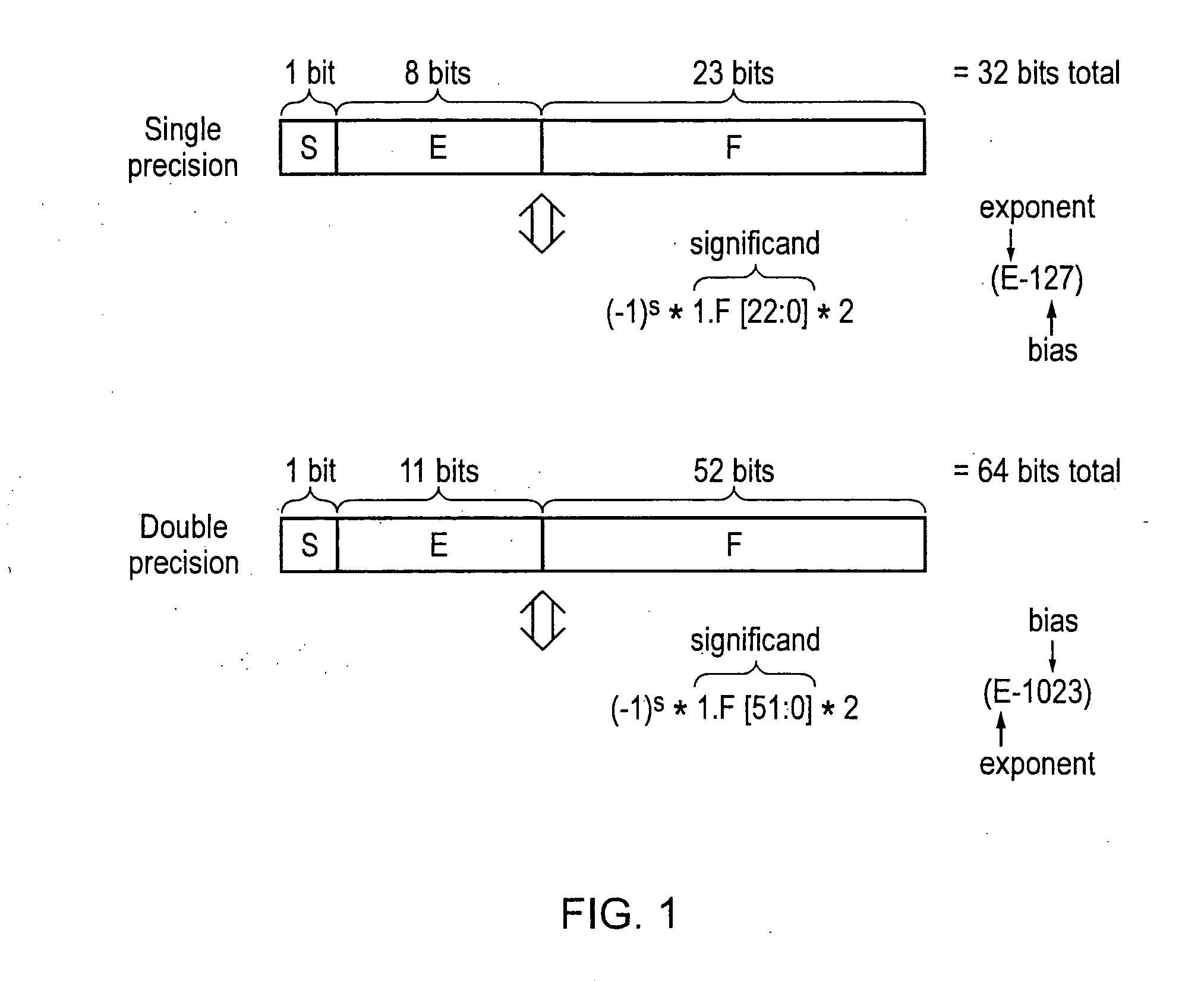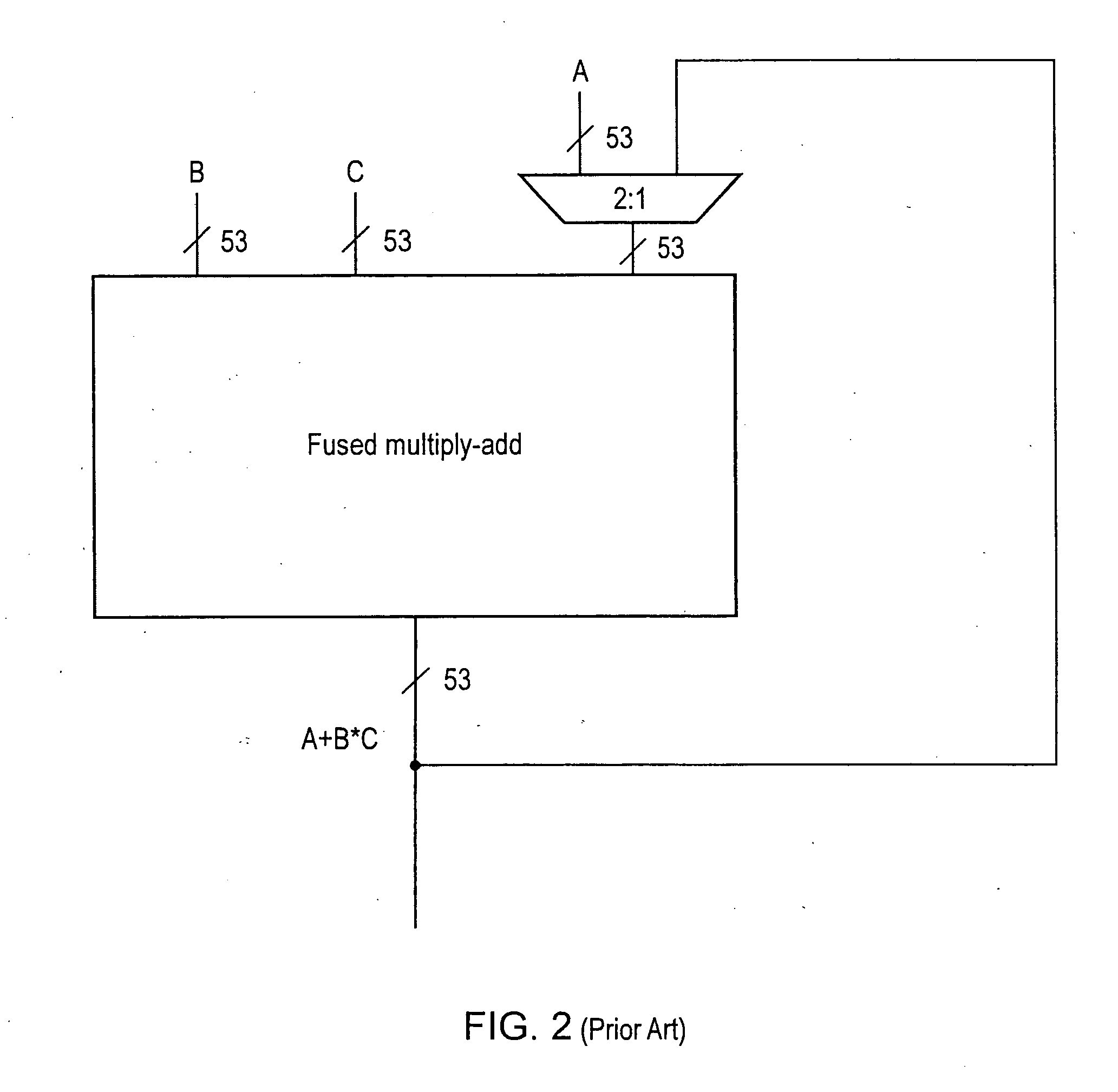Apparatus and method for performing fused multiply add floating point operation
a technology of adding floating point and adding a function, applied in the field of data processing, can solve the problems of reducing precision, reducing precision, reducing precision, etc., and achieve the effects of reducing the precision of the significand, and improving the accuracy of the final resul
- Summary
- Abstract
- Description
- Claims
- Application Information
AI Technical Summary
Benefits of technology
Problems solved by technology
Method used
Image
Examples
Embodiment Construction
[0053]FIG. 3 schematically illustrates a fused multiply add processing unit 1 that may be used as part of a floating point processing unit. Various elements of the fused multiply add unit shall be described below, although it will be appreciated that the floating point multiply add unit 1 would also include additional features and elements not illustrated in FIG. 3 for clarity. The fused multiply add unit 1 is illustrated as processing double precision operands having 53-bit significands, although the fused multiply add unit 1 could also process single precision operands with 24-bit significands (or floating point numbers represented using another floating point format having an N-bit significands).
[0054]The fused multiply add unit 1 includes multiplying circuitry 4 and adding circuitry 8. The multiplying circuitry 4 receives two operands B and C having 53-bit significands. The multiplying circuitry is responsive to a multiply instruction to multiply the operands B and C and to outp...
PUM
 Login to View More
Login to View More Abstract
Description
Claims
Application Information
 Login to View More
Login to View More - R&D
- Intellectual Property
- Life Sciences
- Materials
- Tech Scout
- Unparalleled Data Quality
- Higher Quality Content
- 60% Fewer Hallucinations
Browse by: Latest US Patents, China's latest patents, Technical Efficacy Thesaurus, Application Domain, Technology Topic, Popular Technical Reports.
© 2025 PatSnap. All rights reserved.Legal|Privacy policy|Modern Slavery Act Transparency Statement|Sitemap|About US| Contact US: help@patsnap.com



